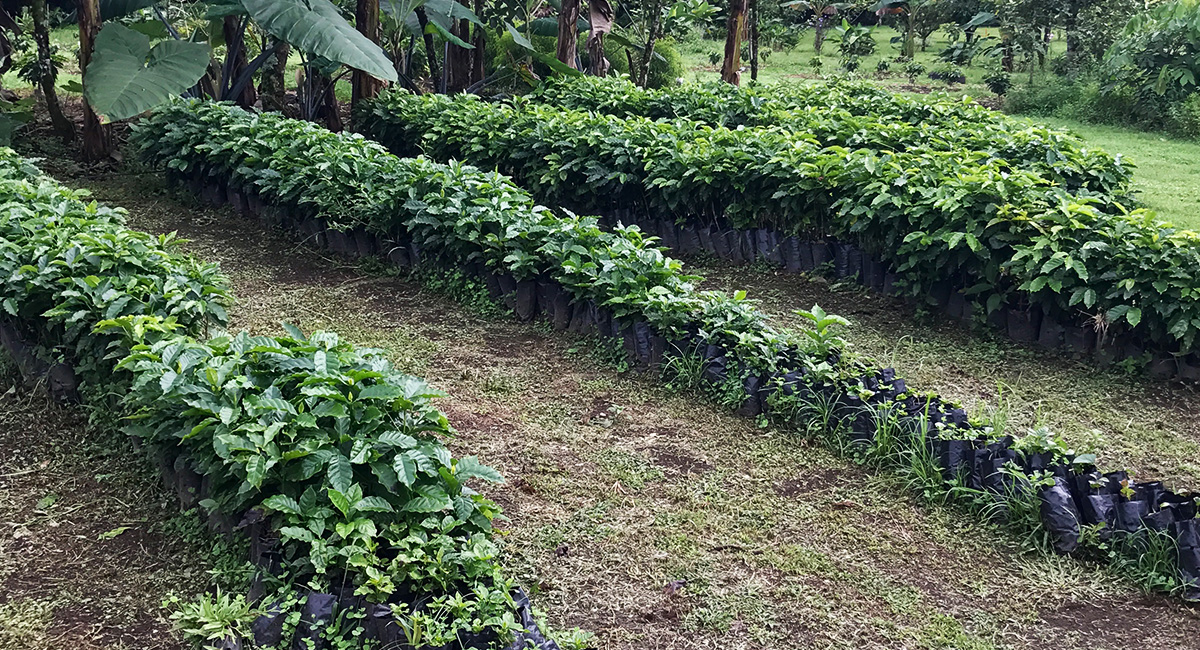Coffee has been grown in Costa Rica for almost two centuries. Once the country gained its independence from Spain in 1821 the government strongly encouraged the growth of the industry by giving away free seeds. Given the country’s rich volcanic soil and abundant biodiversity, coffee trees flourished and farmers rejoiced. Strikingly, green (unroasted) coffee beans were Costa Rica’s ONLY export for over 50 years — from 1846 to 1890.
Although ecotourism is the present day primary source of foreign income to Costa Rica, being one of the most developed and “safest” Central American countries, the coffee industry is still significant. In response to foreign demand for high quality coffee, Costa Rican farmers are altering growing practices to optimize quality often at the expense of quantity. Allan Rojas Cubero, an enthusiastic coffee farmer from the Arenal region, even notes that, “To grow the high yielding but much lower quality coffea robusta in Costa Rica is actually a jailable offense. You can literally be thrown in jail for growing poor quality coffee in Costa Rica” — shocking. Allan would never dream of growing robusta anyway. Instead, his eyes are cast on the Costa Rican Cup of Excellence competition, and he has been experimenting with villa sarchi, caturra, and geisha varietals, intercropped with avocados, at increasing elevations.
Beginning at 1800 meters above sea level, Allan’s trees are among the highest in Costa Rica, which is a calculated pursuit of the “Strictly Hard Bean.” Strictly Hard Bean (SHB) is a classification in Costa Rica designating the highest grade, and more generally refers to coffee trees grown at high altitudes (above 4,500 ft). Coffee grown at higher altitudes is desirable because the beans are more dense. Ceteris paribus, temperatures decrease as elevation increases. Therefore, coffee cherries mature and ripen more slowly, which results in denser beans. Furthermore, higher altitudes receive more erratic rainfall, causing cherries to contract in size. Allan explains, “Flavors, juices, and aromas are concentrated — these cherries are more powerful.” In addition, because the ripening period is expanded, an increase in sugar content development leads to brighter acidity within the finished product.
Following any harvest is the process of removing the coffee bean from the fruit. As a reminder after the Processing Methods P.E. Newsletter last month, Costa Rica is known for its hip new Semi-Washed or “Honey” method. This method involves leaving some of the “honey”-like mucilage on the bean during the drying phase. If timed correctly, the pectin, or sugar, in the mucilage may ferment to a point of enhanced and delicious sweetness. Drying beans partly soaked in mucilage may also add fruity notes to the finished product. The honey process is an exceptionally fun expression of the Strictly Hard Bean.



where can i buy this coffee–coofee from Costa Rica thats from at least 1700 feet
i live in illinois
thanks
Fletcher, you’re going to love this one. I love Costa Rican coffee, which normally goest for $15-$18 a pound. Recently, I acquired a $70 bag of Kona coffee. Which one was better? They were both great! Obviously, the only really big difference was the cost.